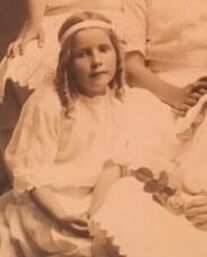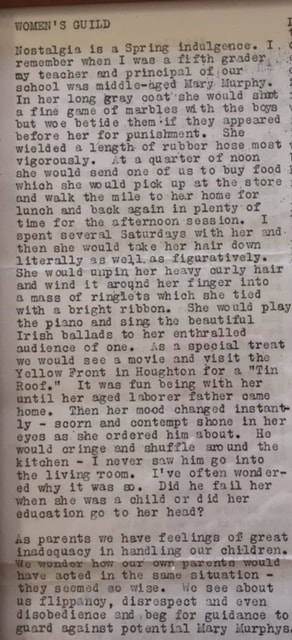Story about Mary Murphy, 1917 Schoolteacher
A Short History of the One-Room Schoolhouse
Before the 18th century, the education of children was primarily performed at home by parents or private tutors. One of the earliest known schoolhouses was in Prussia (modern-day Germany), which housed students in one or two rooms, for studies and games. This was funded by taxation, as Prussia had enacted compulsory education for boys and girls. This model was adapted throughout Europe by the late 1800s.
During the mid-1800s, American educator Horace Mann was lobbying for public education for children in order to produce a better citizenry. The public schools were primarily built in fast-growing cities, supporting a growing immigrant and industrialized population. Accordingly, rural America was left to supply the means for their children to attend school.
Early on, one-room schools in America were centered somewhere near the center of town. This allowed the teacher to be close to the school, especially for female teachers, who were expected to lodge with a family or with another female.
Often the one-room schoolhouse classroom was held in the town’s church, which also served as a community center, but more affluent towns built a separate building, dedicated to teaching alone. Students would walk to school or ride in wagons or by horseback. The teacher would often come early to start the stove and prepare lessons. Hired and paid by the community, rural teachers were under contract and followed community rules.
The school provided lessons for as many as eight grade levels. Teachers would teach a subject, tailoring the lessons to all students according to their abilities.
Today many states have preserved their rural, one-room schoolhouses. These buildings stand as a nostalgic example of the growth of America and the importance of education for children in America.
Before the 18th century, the education of children was primarily performed at home by parents or private tutors. One of the earliest known schoolhouses was in Prussia (modern-day Germany), which housed students in one or two rooms, for studies and games. This was funded by taxation, as Prussia had enacted compulsory education for boys and girls. This model was adapted throughout Europe by the late 1800s.
During the mid-1800s, American educator Horace Mann was lobbying for public education for children in order to produce a better citizenry. The public schools were primarily built in fast-growing cities, supporting a growing immigrant and industrialized population. Accordingly, rural America was left to supply the means for their children to attend school.
Early on, one-room schools in America were centered somewhere near the center of town. This allowed the teacher to be close to the school, especially for female teachers, who were expected to lodge with a family or with another female.
Often the one-room schoolhouse classroom was held in the town’s church, which also served as a community center, but more affluent towns built a separate building, dedicated to teaching alone. Students would walk to school or ride in wagons or by horseback. The teacher would often come early to start the stove and prepare lessons. Hired and paid by the community, rural teachers were under contract and followed community rules.
The school provided lessons for as many as eight grade levels. Teachers would teach a subject, tailoring the lessons to all students according to their abilities.
Today many states have preserved their rural, one-room schoolhouses. These buildings stand as a nostalgic example of the growth of America and the importance of education for children in America.
Learn More!
If you would like to learn more about one-room (or two-room) schoolhouses, we recommend the following:
"Day in My Life: Inside a Two-Room Schoolhouse" by Kathy (Lake Superior Spirit blog, April 1, 2013)
If you would like to learn more about one-room (or two-room) schoolhouses, we recommend the following:
"Day in My Life: Inside a Two-Room Schoolhouse" by Kathy (Lake Superior Spirit blog, April 1, 2013)


